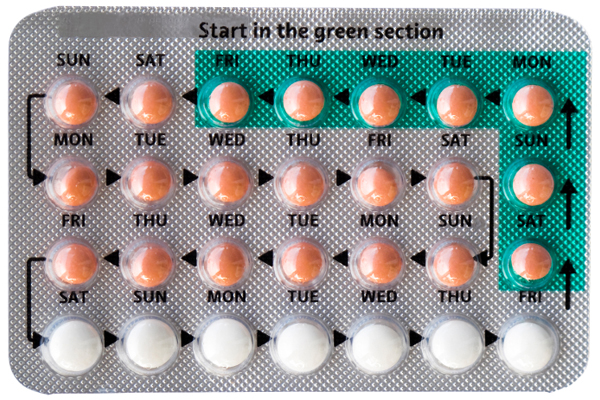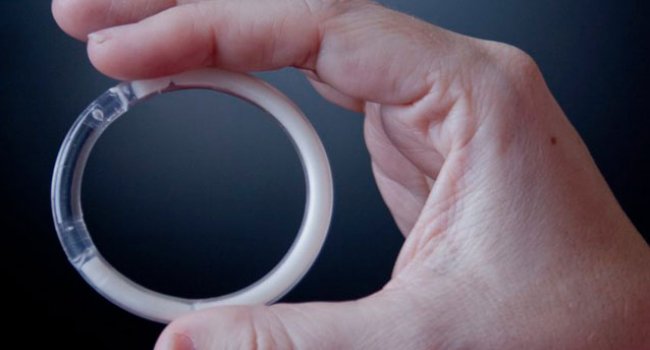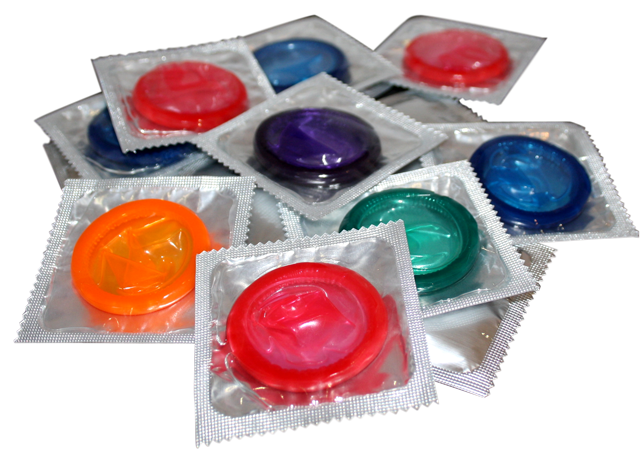Modern women have the possibility to use different types of birth control, each of them has advantages and disadvantages. Comparison of different contraception types helps to choose the birth control method, which will be optimal for both sexual partners. There are three main types of contraception: hormonal, non-hormonal, and surgical.
Each of these birth control methods is divided into numerous subtypes. Therefore, a woman is difficult to understand what contraception method is more effective namely in her case.
For non-hormonal pregnancy prevention, it can be used:
- Spermicides
- Coitus interruptus
- Sexual abstinence
- Male and female condoms
- Cervical caps
- Vaginal diaphragms
- Copper-containing IUDs
If you want to compare different types of non-hormonal birth control, you can do it by yourself. Almost all non-hormonal contraceptives are available for sale without a prescription and complex medical procedures are not required for their use.
An exception is the intrauterine device (IUD), which cannot be installed and removed by yourself. Therefore, besides the purchase of non-hormonal intrauterine device, it is necessary to pay the procedure – its installation and removal.
It should be noted that two types of IUDs are available for sale.
- The first type of IUDs contains only copper. In the USA, copper-containing intrauterine contraceptives are sold under the trademark ParaGard T 380A.
- The second type of IUDs contains only hormone – Levonorgestrel. In the USA, Levonorgestrel-containing IUDs are available for sale under the trademarks Mirena and Skyla.
You can compare two different types of intrauterine birth control by various indicators, including effectiveness and duration of contraceptive effect.
- Copper-containing intrauterine device – ParaGard is set once in 10 years. When ParaGard is properly installed, the effectiveness of this non-hormonal contraception method is 99.4%.
- Hormone-containing intrauterine device – Mirena should be replaced every 5 years. When Mirena is properly installed, the effectiveness of this hormonal birth control method is 99.9%.
It is noteworthy that effectiveness of different types of hormonal birth control is almost identical. Even when hormonal contraceptives are taken orally, their efficiency no less than 99%. When hormonal contraception irregularly or improperly is used, the probability of unwanted pregnancy increases.
For the scheduled or emergency contraception, different types of birth control pills can be used. Oral contraceptive may contain one or two active ingredients. Effectiveness of birth control pills depends both on the number of active ingredients and on the individual features of female body.
By choosing one of the plurality of types of birth control pills, pay attention to their indications for use. Combined birth control pills are used for regular (scheduled) contraception. Birth control pills containing only one hormone are used for emergency contraception after unprotected sexual intercourse.
Hormonal birth control pills for emergency contraception are very often called «mini pills» or «morning-after pills». At the U.S. pharmacies, mini pills are sold under different proprietary names. The most popular brand of mini pills in the USA is Plan B.
Many women choose different types of birth control shots for contraception. Injectable hormonal medicines are used as long-term contraception. Administration method of birth control injections depends on their type.
Suspension for subcutaneous injection – Sayanaject and solution for intramuscular injection Depo-Provera are available at the UK market. Both these hormonal contraceptives contain an active ingredient Medroxyprogesterone.
Administration method of Depo-Provera and Sayanaject injectable contraceptives is different, but the duration of their contraceptive effect is identical and lasts 3 months.
One more popular injectable contraceptive (available in the UK) is sold under the brand Noristerat. Noristerat injectable solution for birth control includes an active ingredient Norethisterone. Noristerat differs from other types of birth control injections by less prolonged contraceptive effect, which lasts just 2 months.
Considering different types of birth control methods, pay attention as to their effectiveness, so and to their side effects.
- When using different barrier contraceptives, the most common side effect is genital itching and burning.
- When using different types of birth control pills, gastrointestinal side effects occur most often.
- Different types of birth control injections may cause pain and redness at the site of solution administration.
The frequency, severity and risk of side effects depend on the type of birth control. For most women, oral contraceptives provide the optimal balance of advantages and disadvantages.
If you want to compare different types of birth control medicines, you can find out from a pharmacist of online pharmacy the information about oral contraceptives.
On online pharmacies, you can find different types of birth control pills and buy the oral contraceptive, which is necessary in your case after a pharmacist’s qualified advice.
For more information about different types of hormonal and non-hormonal contraception, ask all your questions by email or phone. Visitors of online pharmacies have the opportunity to buy different birth control medicines and to get a free advice from a pharmacist in any country of the world.
Weighing your options
It’s easy to be confused by all the birth control options out there: Should you take a progestin-only pill or the mainstream combination pill? Can an IUD affect your chances of having children in the future? Is the female condom as effective as its male counterpart?
Luckily, we have answers. Here are 12 of the most common birth control methods, and why you should or shouldn’t try them.
Combination pill

What it’s called: Estrostep Fe, LoEstrin 1/20, Ortho-Novum 7/7/7, Ortho Tri-Cyclen Lo, Yasmin, Yaz
What it does: This birth control mainstay is still 99% effective against pregnancy when taken around the same time every day. It’s also known for easing hot flashes and restoring regular periods.
Who should avoid it: Smokers and those 35 or older. The estrogen may cause dangerous blood clots. If you suffer from migraines, you should also pass because it may trigger the painful headaches.
Progestin-only pill
What it’s called: Micronor, Nora-BE, Nor-QD, Ovrette
What it does: Known as the mini pill, progestin-only meds don’t contain estrogen. They’re safer for smokers, diabetics, and heart disease patients, as well as those at risk for blood clots. They also won’t reduce the milk supply for women who are breast-feeding.
Who should avoid it: If you have trouble remembering to take your pill at the same time every day, progestin-only pills might not be your best bet. They need to be taken at exactly the same time every day; if you’re more than three hours late, plan on using a backup method.
Extended-cycle pill
What it’s called: Lybrel, Seasonale, Seasonique
What it does: These pills prevent pregnancy and allow you to have a period only every three months. (Note: Lybrel stops your period for a year, but you must take a pill every day, year-round.)
Who should avoid it: There’s no evidence proving it’s dangerous not to have periods, but there is still no long-term research to show that it is safe.
Vaginal ring

What it’s called: NuvaRing
What it does: The ring is made of flexible plastic and delivers estrogen and progestin, just like the combination pill. You place the ring in your vagina for three weeks, and then remove it for one week so that you have a regular period.
Who should avoid it: Women who smoke, or have blood clots or certain cancers, should not use the NuvaRing.
Diaphragm
What it’s called: Milex Wide Seal, Ortho All-Flex, Semina, SILCS
What it does: Made of rubber and shaped like a dome, a diaphragm prevents sperm from fertilizing an egg. It covers the cervix and must always be used with a spermicide. Women must be fitted for a diaphragm in their doctor’s office.
Who should avoid it: If your weight tends to fluctuate by more than 10 pounds at a time, the diaphragm may not work. If you gain or lose weight, you’ll need to be refitted. Prone to bladder infections? You might want to consider another option. If you’ve had toxic shock syndrome, you shouldn’t use a diaphragm.
IUD
What it’s called: Mirena, ParaGard
What it does: ParaGard is a surgically implanted copper device that prevents sperm from reaching the egg. Mirena, also surgically implanted, works by releasing hormones. Intrauterine devices (IUDs) are more than 99% effective and good for 10 years.
Who should avoid it: Some doctors recommend the device only for women who have given birth. When the device is implanted, your uterus is expanded, and this might cause pain in women who have not had children. If you’re planning on having children in a year or two, look at other options. The IUD can be removed, but the high cost—up to $500—might not be worth it for short-term use.
Female condom

What it’s called: Femy, Protectiv, Reality
What it does: The female condom is made of polyurethane, or soft plastic, and protects against STDs. It is inserted deep into the vagina, over the cervix, much like a diaphragm. Unlike the male condom, the female condom can be put into place up to eight hours before sex.
Who should avoid it: Male condoms offer more protection—both against STDs and pregnancy—than female condoms, so if you and your male partner aren’t in a long-term, monogamous relationship, female condoms are not a perfect substitute.
Male condom

What it’s called: Durex, LifeStyles, Trojan
What it does: Male condoms protect against pregnancy and STDs, including HIV. Worn properly, condoms prevent sperm from entering the uterus. Go with latex or polyurethane condoms; lambskins do not shield you against all STDs.
Who should avoid it: If your mate is allergic to latex or polyurethane, you’ll have to find another option. And if you tend to use a lubricant that contains oil, such as hand lotion or baby oil, you’ll need to switch to an oil-free option like K-Y Jelly, which, unlike oil-based lubricants, doesn’t degrade latex.
Patch
What it’s called: Ortho Evra
What it does: You can place the hormone-releasing patch on your arm, buttock, or abdomen, and rest easy for one week.
Who should avoid it: If you’re particularly at risk for blood clots, you might want to find a different method. The patch delivers 60% more estrogen than a low-dose pill, so you’re at an increased risk for dangerous blood clots.
Implant
What it’s called: Implanon, Norplant
What it does: About the size of a matchstick, the implant is placed under the skin on your upper arm. Implants last for three years and can cost up to $800. They are nearly 100% effective.
Who should avoid it: Implanon may not work as well for women taking St. John’s wort, or women who are overweight
Sterilization
What it’s called: Essure, tubal ligation, vasectomy
What it does: Women can undergo either tubal ligation, a surgical procedure that blocks the fallopian tubes from carrying eggs to the uterus, or tubal implants (Essure), a nonsurgical technique in which a small coil is inserted into the fallopian tubes. The sterilization process is less risky for men: A vasectomy is a minor surgery in which the tubes that carry sperm from the testicles are cut.
Who should avoid it: If you plan to have children, sterilization is not an option—it’s not designed to be reversible.
Emergency contraception
What it’s called: Copper T IUD, Next Choice, Plan B, Plan B One-Step
What it does: Emergency contraception is a backup for regular birth control. Plan B contains a higher dose of the same synthetic hormones found in the combination pill. It works best if taken within 72 hours of unprotected sex, but may work up to five days later. There’s also the copper T IUD, which a doctor can insert into your uterus five to seven days after unprotected sex.
Who should avoid it: Plan B, known as the morning-after pill, is available over-the-counter at most pharmacies, but only to women 18 years and older. Minors need a prescription. Copper T IUDs can be very expensive—up to $500. Plus, they last for up to 10 years, so if you hope to get pregnant in the future, this isn’t for you.
For more information visit us our website: https://healthcaretipshub.com







No Comment! Be the first one.